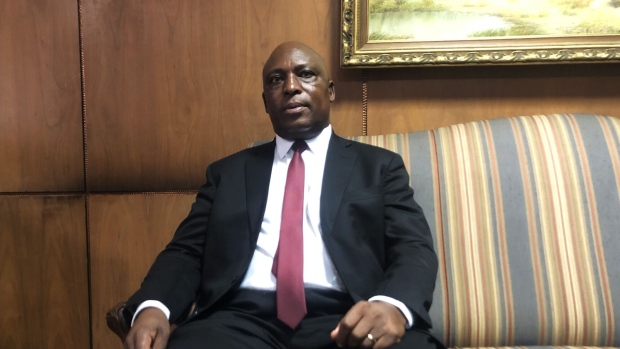Apr 18, 2024
Zimbabwe Central Bank Chief Says He’ll Curb Excessive ZiG Gains
, Bloomberg News

(Bloomberg) -- Zimbabwe, whose currency declined 80% before being abandoned, is now worried about its new unit appreciating too fast.
The ZiG has advanced 1.6% against the dollar since it was introduced on April 5, spurring concerns that it will hurt exporters who shipped $6.6 billion of gold, tobacco and other goods last year. Zimbabwe’s central bank is ready to intervene and curb excessive gains, Governor John Mushayavanhu said.
“If it becomes too strong, the central bank can intervene by going into the market,” Mushayavanhu said in an interview from the central bank’s offices in Bulawayo, the second-largest city, on Wednesday. “Depending on if it becomes too strong or too weak, you can either buy or sell and bring it back to normal. We expect that if market forces are working, which they are, they may be no need for that.”
He didn’t specify what exchange-rate level will prompt an intervention.
Read More: Things Won’t End Well for Zimbabwe Gold: Justice Malala
The ZiG is the nation’s sixth attempt to try and establish a functioning local currency. It is backed by 2.5 tons of gold and $100 million in foreign currency reserves held by the central bank.
A single ZiG is worth 7 US cents and it began trading at an exchange rate of 13.56 per dollar.
“Since we launched the ZiG on the April 5, it has been trading and the exchange rate that you are seeing where it has firmed is not coming from the central bank, but has been determined by the market,” Mushayavanhu said.
Read More: Zimbabwe Hopes to Start Staff-Monitored IMF Program This Year
The return of the local currency in 2019 was credited with boosting local industries, which had declined during years of dollarization when greenbacks were solely used to price goods. Factory capacity utilization rose to about 57% last year, from as low as 36% in 2019, national statistics agency data show.
Using a basket of precious minerals and cash reserves to back the currency is deliberate, Mushayavanhu said, with the policy allowing for some flexibility to the exchange-rate. Initially, policymakers considered the adoption of a fully-fledged gold standard, but the World Bank advised against the idea.
“We consulted far and wide, and the consensus arising from our consultations was that it was no longer tenable for us to continue using the Zimbabwe dollar and we had to change,” he said. “We had to change to a currency anchored on reserves.”
Other highlights from the interview:
- The authorities abandoned plans to establish a currency board, first touted by the Treasury, after settling on backing the new currency with reserves.
- The inflation forecast remains unchanged at anything between 2% and 5%. “There is a danger of deflation,” Mushayavanhu said. “The central bank can always intervene from time to time and correct the exchange rate so that we don’t end up in deflation.”
- Foreign investors with shares on the Zimbabwe Stock Exchange will be able to repatriate their proceeds when they sell. Dividends can also be repatriated.
- A strengthening of the ZiG will likely put informal currency dealers out of business, the governor said.
--With assistance from Mike Cohen.
©2024 Bloomberg L.P.







